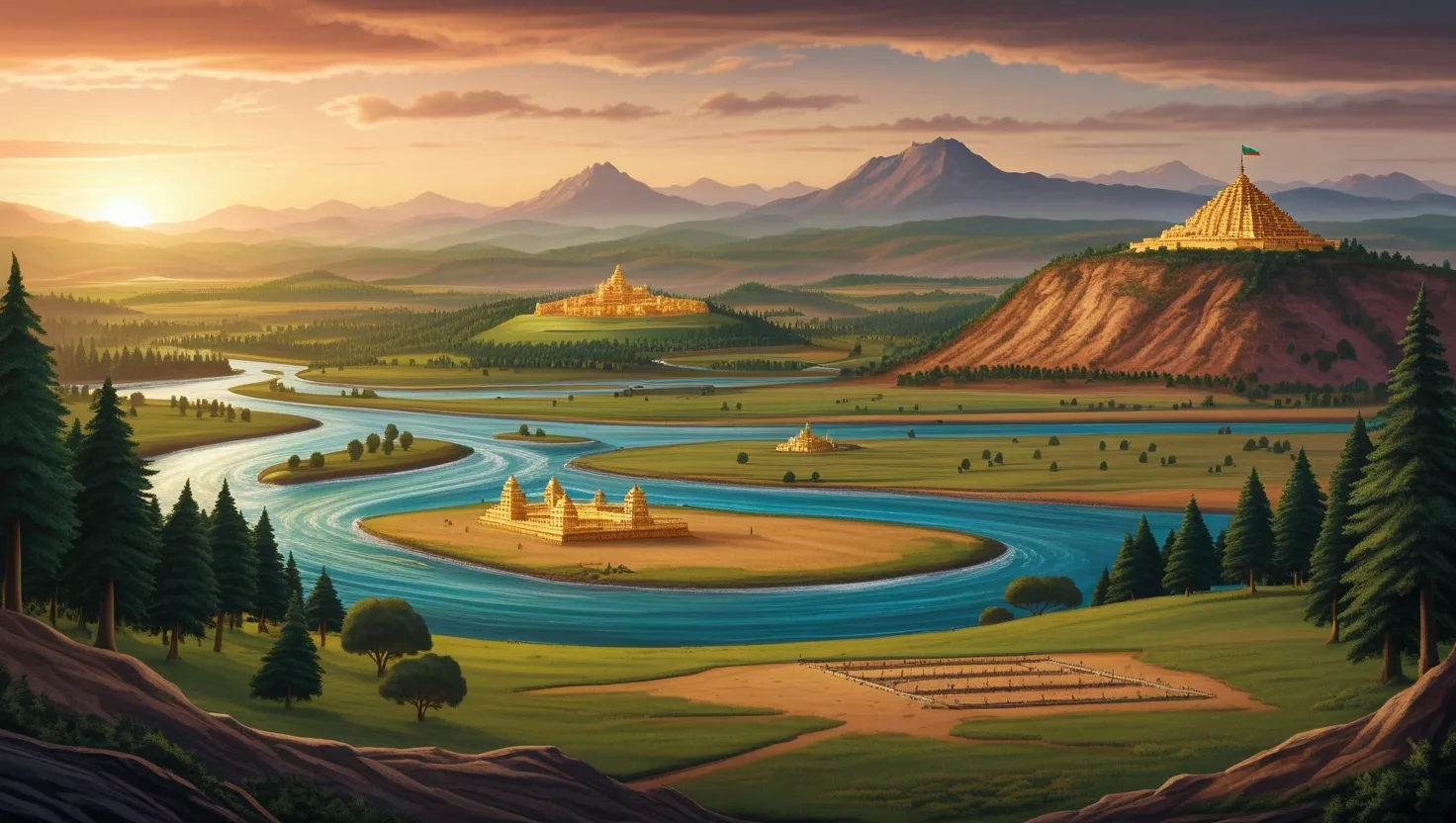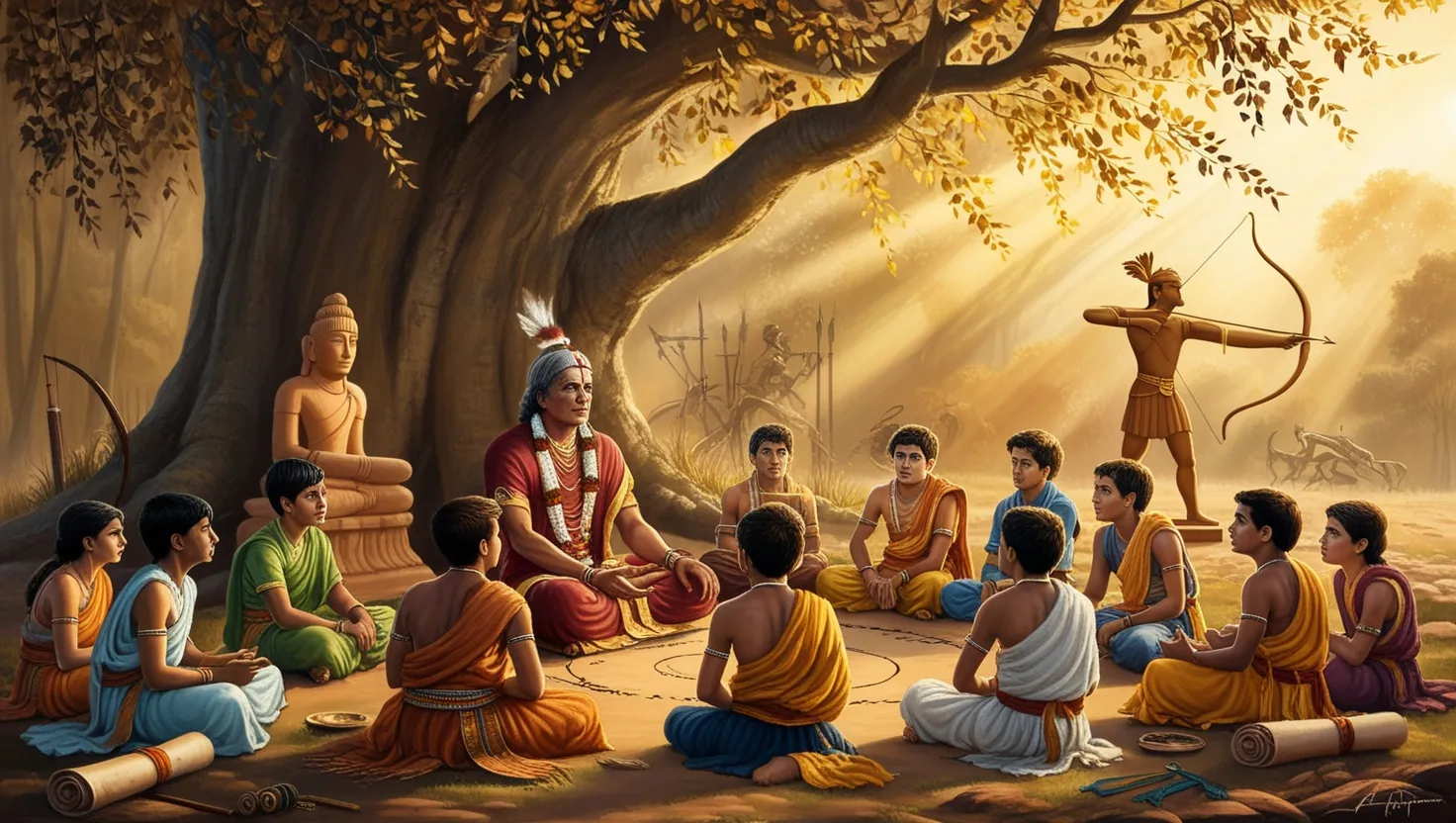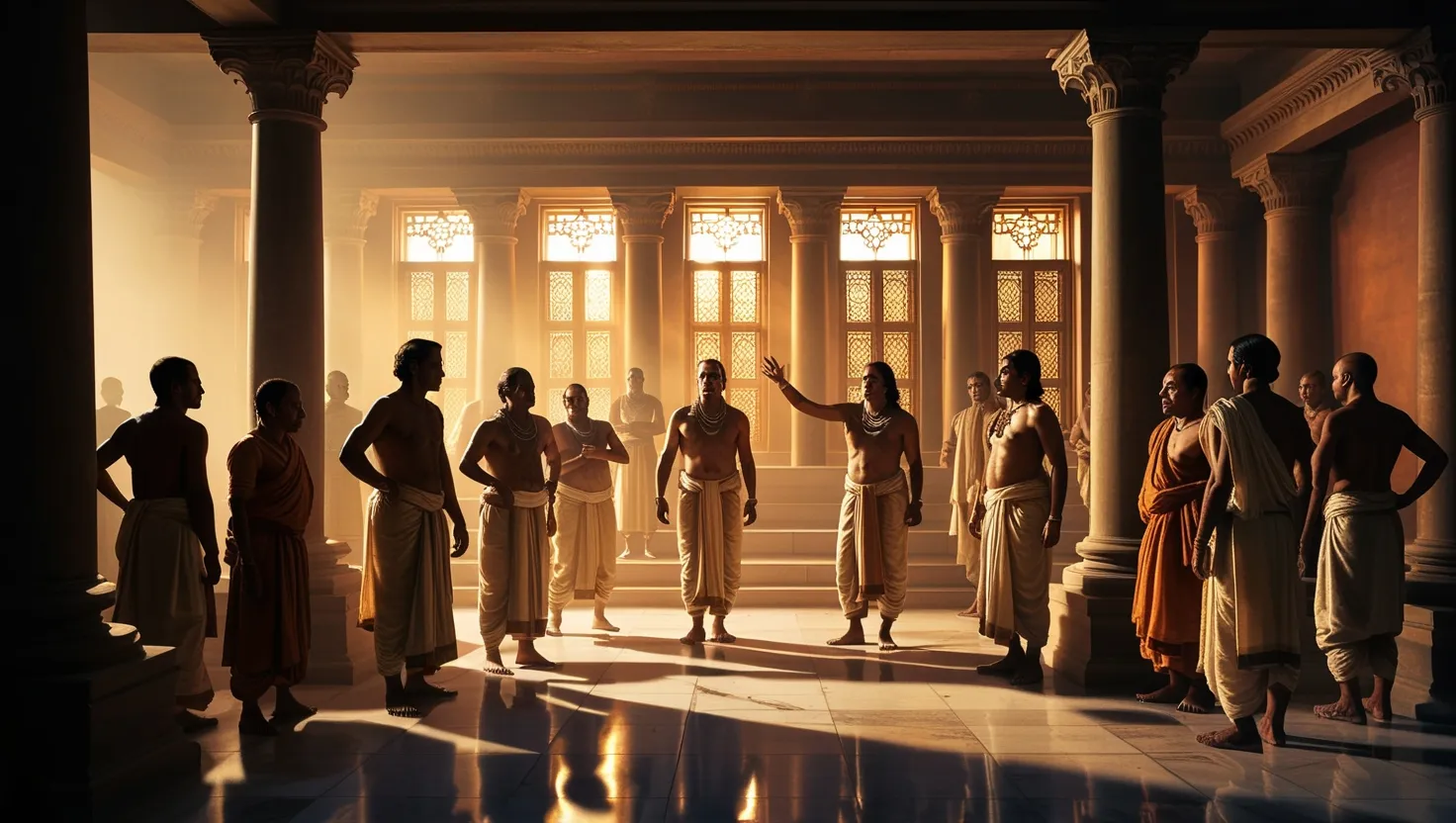The Mahabharata’s spiritual geography is a captivating realm where the physical and metaphysical intertwine, creating a landscape that transcends mere setting to become an active participant in the epic’s unfolding drama. This ancient text paints a vivid picture of sacred places that serve as catalysts for spiritual awakening, character development, and the exploration of profound philosophical concepts.
Let’s begin our journey at Kurukshetra, the epicenter of the Mahabharata’s climactic battle. This dharmakshetra, or field of righteousness, is far more than a simple battlefield. It’s a cosmic stage where the eternal struggle between dharma and adharma plays out in all its complexity. Here, amidst the chaos of impending war, Krishna imparts the timeless wisdom of the Bhagavad Gita to Arjuna. The physical space of Kurukshetra transforms into a realm of spiritual instruction, where the highest truths of existence are revealed.
Have you ever considered how a place can shape the course of history and the destiny of individuals?
As we move from the battlefield to the centers of power, we encounter Hastinapura, the grand capital of the Kuru kingdom. This city embodies the intricate dance of politics, ambition, and moral dilemmas. Within its royal court, we witness moments of great wisdom juxtaposed against terrible injustice. The opulent palaces and bustling streets of Hastinapura serve as a stark reminder of the ephemeral nature of worldly achievements. It’s a place where the material and the spiritual collide, forcing characters – and readers – to confront the true nature of power and its consequences.
“What is this body but a guest house for the soul? This city of Hastinapura, with all its grandeur, is but a temporary dwelling. True greatness lies in understanding the eternal.”
Indraprastha, the magnificent city built by the Pandavas, offers a different perspective on the interplay between the human and the divine. This marvel of architecture, created with the help of Maya the celestial architect, represents the heights of human creativity blessed by divine favor. The palace of illusions within Indraprastha serves as a powerful metaphor for the deceptive nature of material reality. It challenges our perceptions and invites us to look beyond surface appearances to discern deeper truths.
Throughout the Mahabharata, characters embark on pilgrimages to various tirthas, or sacred sites. These journeys are far more than simple travels from one point to another. Each tirtha serves as a nexus of transformation, where the veil between the mundane and the divine grows thin. At these sacred waters, heroes receive celestial weapons, encounter spiritual beings, and gain profound insights that alter the course of their lives and the epic itself.
Consider the forests where the Pandavas spend their years of exile. These wild spaces become crucibles of character, where hardship and solitude forge strength and wisdom. The contrast between the opulence of royal courts and the austerity of forest dwellings highlights the Mahabharata’s exploration of renunciation and the true sources of power.
What lessons can we draw from these sacred places in our own lives? How might we create or recognize spaces of transformation in our modern world?
The Mahabharata’s treatment of sacred geography reminds us that physical spaces can hold immense spiritual significance. These locations are not merely backdrops but active participants in the story, serving as external manifestations of internal journeys. They are places where characters – and by extension, readers – confront their limitations, face their deepest fears, and discover profound truths about the nature of existence.
Take, for example, the sacred river Ganga. In the Mahabharata, it’s not just a waterway but a living goddess, a link between heaven and earth. The story of its descent, brought about by the penance of King Bhagiratha, illustrates the power of devotion and the interconnectedness of all realms of existence. The Ganga becomes a symbol of purification, a place where sins are washed away and spiritual rebirth becomes possible.
“As the Ganga purifies all who bathe in her waters, so does the company of the wise cleanse the mind of impurities.”
The concept of sacred space in the Mahabharata extends beyond specific locations to encompass entire regions. The land of Bharatavarsha itself is portrayed as a sacred entity, a place where the divine drama of existence unfolds. This perspective invites us to see the sacredness in our own surroundings, to recognize the potential for spiritual growth and transformation in the world around us.
One of the most intriguing aspects of the Mahabharata’s spiritual geography is how it blurs the lines between the physical and the metaphysical. Mount Meru, for instance, is described as both a real mountain and the axis mundi, the center of the spiritual and physical worlds. This dual nature challenges our conventional understanding of reality and invites us to perceive the sacred dimension that permeates all of existence.
The epic also introduces us to hidden realms and parallel worlds. The underwater kingdom of the Nagas, the celestial realms of the gods, and the subtle planes inhabited by sages and mystics all expand our conception of what constitutes “real” space. These realms serve as reminders that reality is far more vast and mysterious than what we perceive with our limited senses.
How might embracing a more expansive view of reality, as suggested by the Mahabharata, change our relationship with the world around us?
The Mahabharata’s treatment of sacred places also offers profound insights into the nature of pilgrimage. The epic suggests that while physical journeys to holy sites can be transformative, the true pilgrimage is an inner one. Characters who visit sacred places without the proper attitude or inner preparation often fail to experience their transformative power. This teaches us that the sacredness of a place is as much about our inner state as it is about the location itself.
“The greatest tirtha is not found in rivers or mountains, but in the pure heart that seeks truth.”
One of the lesser-explored aspects of the Mahabharata’s spiritual geography is how it relates to the concept of time. Certain sacred places in the epic are described as existing outside of normal temporal flow. In these liminal spaces, characters can spend what seems like years in spiritual practice or instruction, only to return to find that little time has passed in the outside world. This manipulation of time and space adds another layer of depth to the epic’s exploration of reality and perception.
The Mahabharata also uses its spiritual geography to explore the concept of karma and its effects across lifetimes. Certain locations are imbued with the karmic residue of past events, influencing the present and future. This interconnectedness of time, space, and action creates a rich tapestry of cause and effect that spans the entire epic.
As we delve deeper into the Mahabharata’s spiritual landscape, we encounter places that serve as bridges between different realms of existence. The sacred lake Manasarovar, for instance, is described as a gateway to higher planes of consciousness. These transitional spaces challenge our notions of fixed boundaries and invite us to consider the fluid nature of reality.
The epic’s treatment of sacred geography also offers valuable lessons on environmental stewardship. Many of the tirthas and sacred forests are portrayed as delicate ecosystems that require protection and reverence. This ancient wisdom resonates strongly in our current age of environmental crisis, reminding us of the intrinsic sacredness of the natural world.
What would it mean to treat our own environment as sacred space? How might this shift in perspective change our relationship with the world around us?
As we conclude our exploration of the Mahabharata’s spiritual geography, we’re left with a profound appreciation for the depth and complexity of this ancient text. Its treatment of sacred places goes far beyond mere description, offering a rich philosophical framework for understanding the relationship between consciousness, space, and spiritual transformation.
The Mahabharata invites us to see the world through a lens of sacred potential, where every location – from grand palaces to humble forest retreats – can serve as a catalyst for inner growth and realization. It challenges us to recognize the divine drama unfolding in our own lives and surroundings, to seek out those spaces of transformation that exist both within and without.
In our modern world, where the sacred and the profane often seem sharply divided, the Mahabharata’s integrated vision of spiritual geography offers a powerful alternative. It reminds us that the divine is not confined to temples or holy sites but permeates all of existence. By cultivating this perspective, we open ourselves to the possibility of transformation in every moment and every place.
As we navigate our own journeys through life’s Kurukshetras and Indraprasthas, may we carry with us the wisdom of the Mahabharata’s sacred geography. May we learn to see the extraordinary in the ordinary, to recognize the potential for spiritual awakening in every step we take. For in doing so, we transform not just ourselves, but the very world around us.






